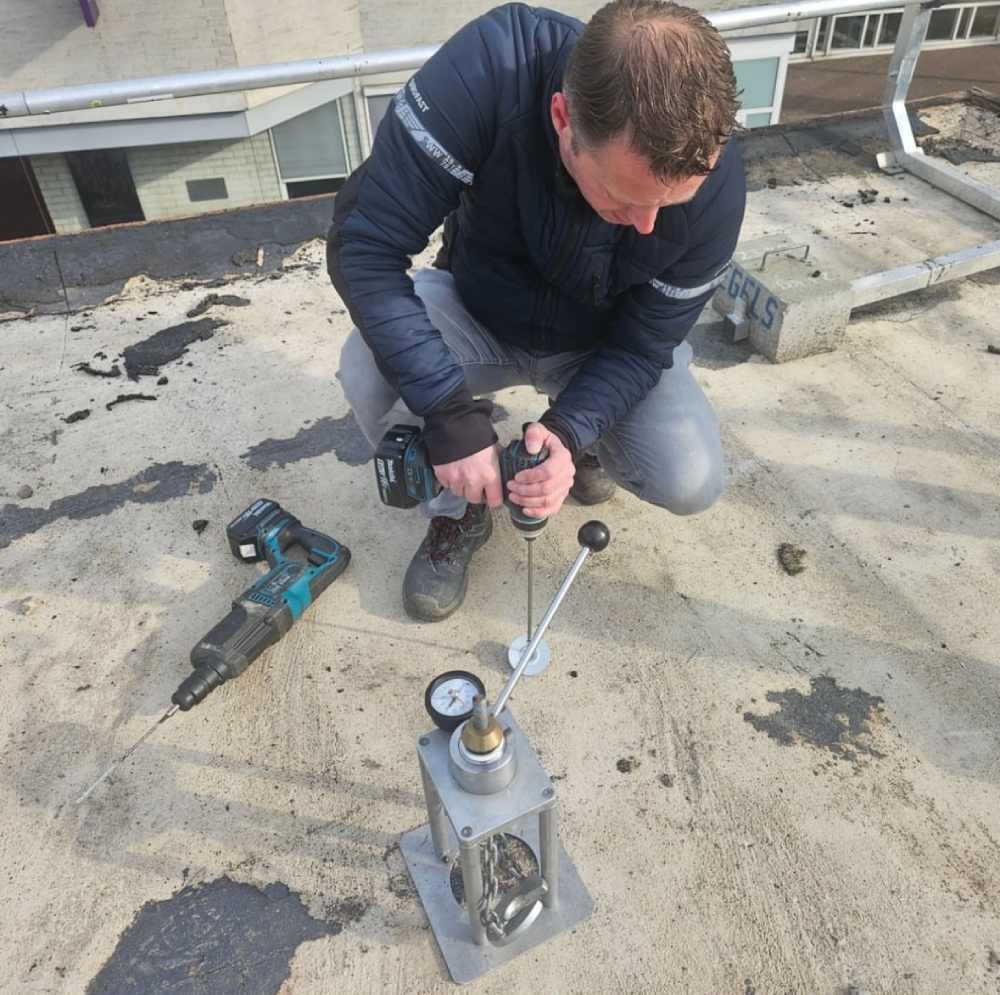
Unlike any other construction work, flat roofing projects come with a raft of unique challenges that demand the highest levels of planning to ensure structural integrity, durability and long-term performance. Pull-out tests are one of the most important elements of this process, establishing appropriate fixing patterns and more. In the latest learning resource from Tecron, we highlight everything roofing contractors need to know about pull-out testing.
Pull-Out Testing: An Essential Process
From verifying fixing strength and space optimisation to assessing substrate integrity and mitigating wind uplift risks, pull-out testing ensures comprehensive insights that ensure optimum end results. We’ve identified six key areas that make pull-out testing a bare essential on your flat roofing project. Keep reading to learn more…
1. Verify Your Fixing Strength
One of the core benefits of pull-out testing is that they provide accurate empirical data on the strength of the fixings used in your flat roof installation project.
Pull-out testing simulates real-world conditions and assesses your fasteners’ ability to withstand load-bearing requirements by subjecting them to controlled tension forces. By verifying your fixing strength, you can ensure that your choice of fixing pattern can sufficiently secure roofing membranes, insulation layers and other components. The end result? A finished project that minimises the risk of structural failures or material detachment.
2. Optimise Your Fixing Space & Layout
There are a number of factors that effective fixing patterns depend on, ranging from roofing materials and substrate conditions to climate and building usage.
Fortunately, pull-out testing allows engineers and contractors to use empirical evidence to fully justify their fixing spacing and layout, as opposed to relying on manufacturer recommendations or theoretical calculations. This process allows you to systematically test a variety of configurations, including different spacings and orientations.
More than any other planning process, pull-out testing helps identify the most efficient and robust fixing pattern for your flat roofing project.
3. Assess the Integrity of Your Substrate
Your flat roof substrate will largely vary in its composition and condition, weather that’s concrete, metal decks or timber structures. By conducting thorough pull-out testing, engineers and contractors can both evaluate the performance of their fixings whilst also receiving data-informed insights into the integrity of the underlying substrate.
This is a significant benefit as detecting weaknesses or inconsistencies in the substrate provides space for remedial measures to be implemented, ensuring a strong and stable foundation for grounding the roofing system.
4. Mitigate the Risks of Wind Uplift
Wind uplift presents a significant threat to flat roofing, especially in Ireland where strong winds are a common weather characteristic. Pull-out testing is one of the most comprehensive ways of assessing your fixings’ resistance to wind uplift forces, guiding design and installation teams in determining the best fixing patterns and specifications.
By determining this information, you can contribute to the overall resilience of your flat roof against wind-related damage or failure.
5. Ensure Quality Assurance and Compliance
Where quality assurance protocols are concerned, pull-out testing processes are a bare essential. This is because these tests objectively evaluate the performance of your fixings; ensuring compliance with industry standards, building codes and project specifications.
By providing full documentation of your tests, you can provide your stakeholders with the confidence they expect in the reliability and safety of your completed project, fostering accountability and transparency throughout the construction process.
6. Predict Long-Term Performance
Roofing contractors will understand that the durability and longevity of their flat roofing system will hinge on the effectiveness of their fixings in maintaining structural integrity over a period of time. Only by conducting comprehensive pull-out tests contractors can predict long-term performance and proactively identify any issues that may arise across the lifespan of the roof.
By proactively addressing fixings-related concerns based on pull-out test results, stakeholders can mitigate maintenance requirements, minimize lifecycle costs, and prolong the service life of flat roofing installations.
Implement Pull-Out Testing on Your Next Project
By integrating pull-out testing into the construction process, stakeholders can ensure the reliability, compliance, and long-term sustainability of flat roof installations, ultimately delivering superior outcomes for building owners, occupants, and communities alike. Take Tecron’s advice: don’t discover the importance of pull-out testing by accident.
Tecron: Your Roofing Partner
For full details and information on our range of Single Ply membranes please contact the Tecron Team or call and see us at our trade counter. Alternatively, email our team via sales@tecron.ie or call us on +353-91-353545.
